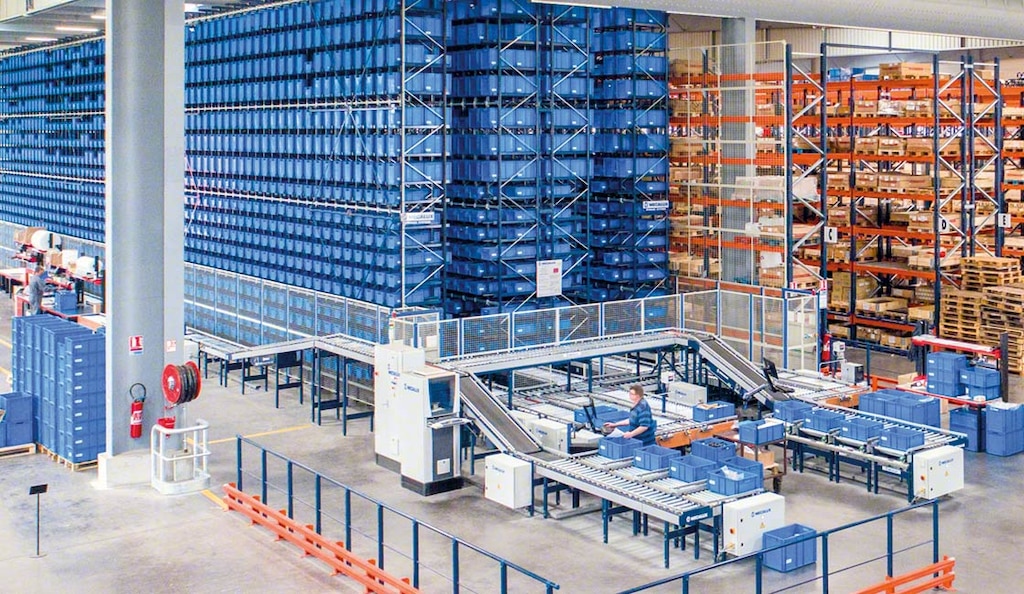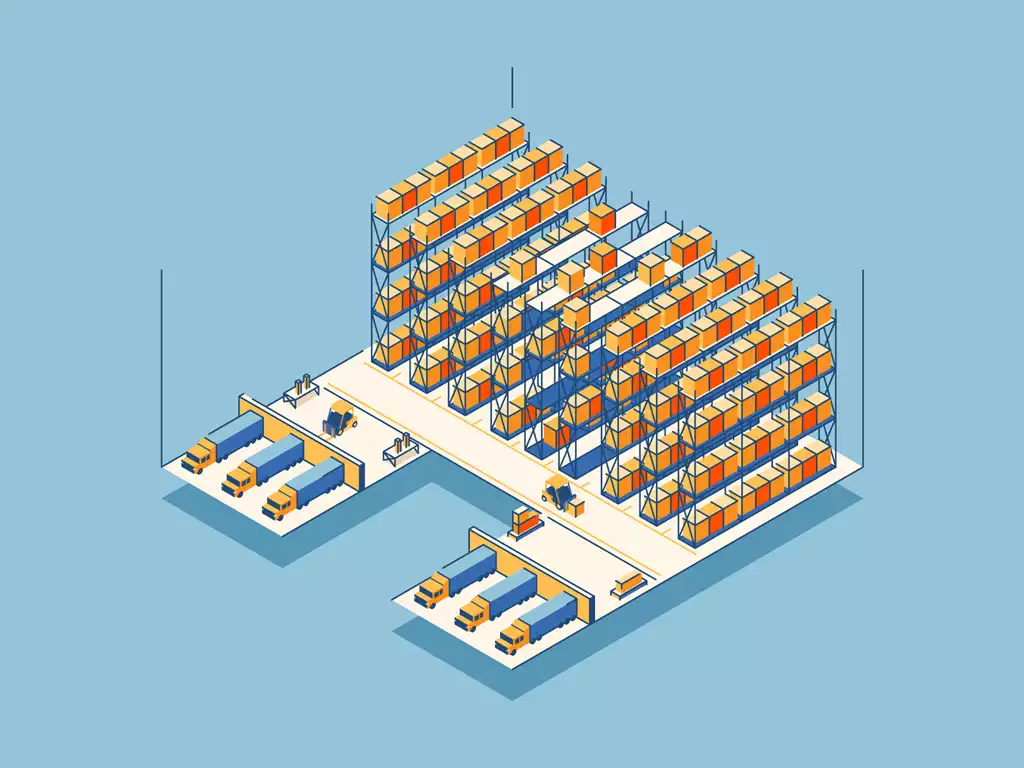Warehouse Layout Optimization: Strategies for Efficiency and Productivity
Optimizing the layout of a warehouse is one of the most crucial steps in improving operational efficiency, reducing costs, and ensuring faster delivery times. A well-organized and strategically designed warehouse layout can increase productivity, minimize delays, and enhance overall warehouse management. In this article, we will explore the importance of warehouse layout optimization, key strategies for achieving it, and best practices to streamline warehouse operations.

What is Warehouse Layout Optimization?
Warehouse layout optimization refers to the process of designing and organizing the warehouse space in a way that minimizes movement, improves space utilization, and enhances the flow of goods. It involves careful planning of where products are stored, how they are retrieved, and how orders are processed to reduce inefficiencies and improve overall warehouse performance.
An optimized warehouse layout helps businesses reduce operational costs, improve order fulfillment accuracy, and increase the speed at which products are moved through the facility. Whether it’s a small warehouse or a large distribution center, optimizing the layout is key to supporting scalable growth and meeting customer demands efficiently.
The Importance of Warehouse Layout Optimization
An optimized warehouse layout is essential for several reasons:
1. Increased Efficiency and Productivity
- An efficient layout ensures that items are easily accessible, reducing the time workers spend locating and picking products.
- Reduces unnecessary movement, which directly improves the speed of order fulfillment.
2. Better Inventory Management
- A well-organized layout ensures better inventory tracking and fewer errors, which can help prevent stockouts, overstocking, and inventory discrepancies.
- It simplifies restocking, inventory counts, and order processing.
3. Cost Savings
- Reducing movement time, labor hours, and equipment use leads to cost savings.
- Optimized space usage means better storage density, reducing the need for additional warehousing space.
4. Improved Safety and Accessibility
- A well-planned layout makes it easier for workers to navigate the warehouse, reducing the risk of accidents and injuries.
- Proper storage and clear pathways enhance accessibility to goods, minimizing delays.
Key Strategies for Warehouse Layout Optimization
To achieve the most efficient warehouse layout, several strategies can be employed based on the type of goods, volume of orders, and warehouse space. Here are some of the best approaches:
1. Assess Your Warehouse Space
Before making any changes, conduct a thorough analysis of your current warehouse space. Evaluate the following:
– Product size and weight: Heavy or bulky items need more space, while lighter products can be stored in compact areas.
– Inventory turnover: High-demand items should be placed in easily accessible locations, while slower-moving products can be stored farther away.
– Order types: Consider whether your warehouse handles single-item orders, bulk orders, or mixed orders to determine the best layout design.
2. Use Efficient Storage Systems
Selecting the right storage systems can optimize warehouse space and improve efficiency. Popular options include:
- Racking Systems: Selective racking, double deep racking, and drive-in racking systems can be used depending on the type of goods and the warehouse layout.
- Shelving Units: Shelves are ideal for smaller or lighter items and can be used for quick picking.
- Flow Rack Systems: These systems ensure that products move from one end to the other via gravity, reducing the need for manual picking and improving product turnover.
3. Choose the Right Warehouse Layout Design
Several layout designs are used in warehouse optimization, each with specific benefits based on the operation. Some of the most common layouts include:
- U-Shaped Layout: This layout allows for both receiving and shipping to be on the same side of the warehouse, which minimizes the distance goods travel. It’s ideal for businesses with a high turnover of products and frequent restocking.

- Throughput Layout: This layout focuses on maximizing the flow of goods by establishing a linear flow through the warehouse. It’s suitable for large warehouses with high-volume orders.
-
Grid Layout: In this design, the warehouse is divided into zones using aisles and rows for easy movement of goods. It is ideal for warehouses storing a wide variety of products.
-
Combination Layout: This approach combines elements from different layout designs to fit specific business needs. It can be customized to suit both high-volume and low-volume goods.
4. Implement Automation
Automation can greatly enhance warehouse layout optimization by improving accuracy, speed, and labor productivity. Common automation systems include:
- Automated Guided Vehicles (AGVs): These are robotic carts that transport goods within the warehouse, reducing the need for manual labor and improving the flow of goods.
- Conveyor Systems: Conveyors help move goods quickly from one area to another without human intervention.
- Automated Storage and Retrieval Systems (AS/RS): These systems automatically store and retrieve goods from designated locations, reducing manual picking time and improving accuracy.
5. Consider Inventory Management Best Practices
A good layout alone is not enough if inventory management practices are not optimized. Here are some practices to consider:
- First In, First Out (FIFO): Products that enter the warehouse first should be shipped out first. This is especially important for perishable goods or products with expiration dates.
- Real-time Inventory Tracking: Using RFID or barcode scanning systems allows real-time updates on inventory, reducing discrepancies and enabling better decision-making.
6. Optimize Picking Routes
Efficient picking routes are critical for reducing the time workers spend retrieving goods. There are several strategies to optimize picking:
- Batch Picking: Group orders together and pick items for multiple orders at once. This reduces the number of trips a worker has to make within the warehouse.
- Zone Picking: Divide the warehouse into specific zones and assign workers to pick items within their designated zone. This reduces cross-traffic and streamlines the picking process.

Best Practices for Warehouse Layout Optimization
To make the most of your warehouse layout, implement these best practices:
1. Maximize Vertical Space
If your warehouse has high ceilings, take advantage of vertical space by using taller racking systems. This can help optimize storage and free up floor space for more critical operations.
2. Regularly Review and Update Your Layout
As your business grows and your inventory changes, it’s important to continuously review and optimize your warehouse layout. Regular audits and feedback from warehouse staff can help identify areas for improvement.
3. Prioritize Safety
Safety should always be a priority in warehouse design. Ensure that aisles are wide enough for forklifts, that all racking systems are stable, and that emergency exits are clearly marked. Implementing safety protocols and training staff on proper warehouse procedures can reduce the risk of accidents.
4. Plan for Future Expansion
When optimizing your warehouse layout, think about scalability. Design your layout so that it can accommodate future growth without requiring significant changes. This could involve planning for additional storage space or expanding the warehouse in a way that minimizes disruption.
FAQs About Warehouse Layout Optimization
1. What is the best layout for a warehouse?
There is no one-size-fits-all answer, as the best layout depends on the type of products you store and the scale of your operations. Common layouts include U-shaped, throughput, and grid layouts. Each offers unique benefits based on your specific needs.
2. How can automation improve warehouse layout optimization?
Automation can reduce the time spent manually moving goods and increase accuracy. Technologies such as AGVs, conveyor systems, and automated storage and retrieval systems (AS/RS) enhance operational efficiency, making the warehouse layout more productive and cost-effective.
3. How do I know if my warehouse layout needs optimization?
If you notice slow order fulfillment, frequent stockouts, or employees spending excessive time walking to retrieve products, these are signs that your warehouse layout may need improvement. Regular audits and employee feedback can help identify inefficiencies.
4. What is the role of inventory management in warehouse layout optimization?
Proper inventory management ensures that items are easily accessible and correctly tracked. Implementing FIFO, real-time inventory tracking, and organized storage systems can help maximize the efficiency of your warehouse layout.
Conclusion
Warehouse layout optimization is a critical element in driving operational efficiency, improving productivity, and reducing costs. By carefully evaluating your warehouse space, implementing efficient storage systems, and using technology to automate processes, you can create a well-organized warehouse that supports growth and enhances customer satisfaction.
For more information on warehouse layout optimization and best practices, visit:
– Warehouse Layout Optimization Blog
– Warehouse Storage Solutions

